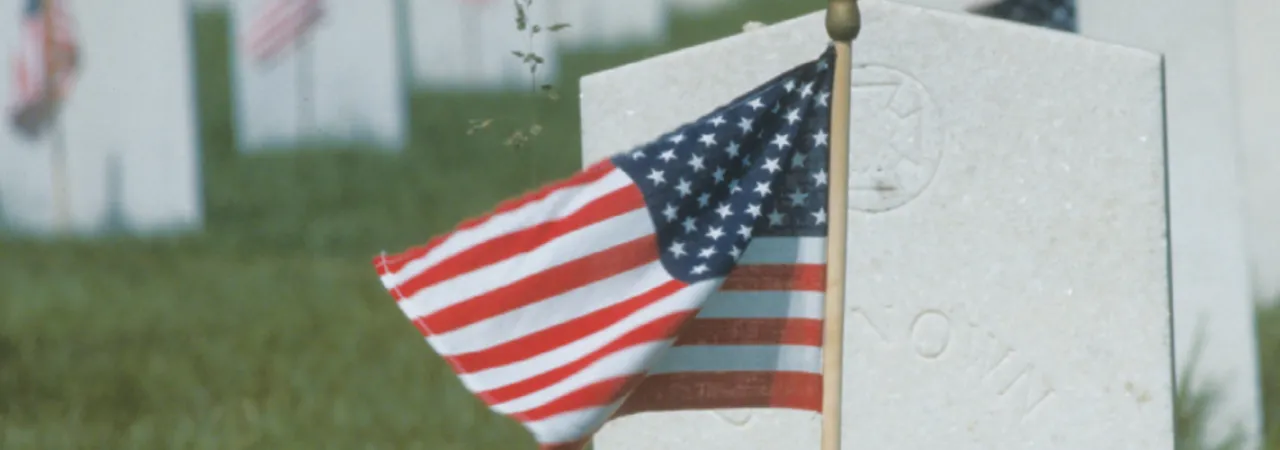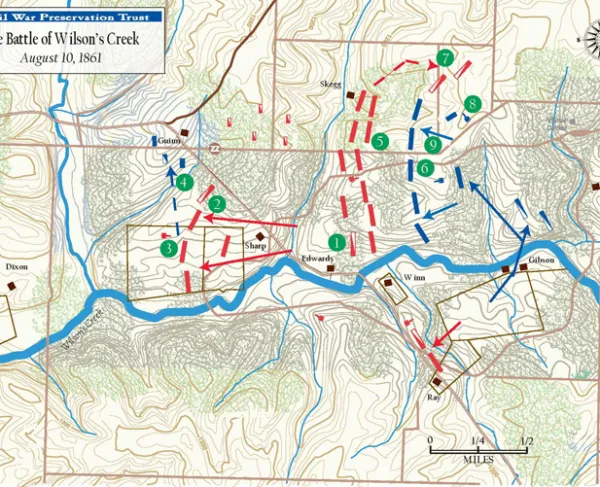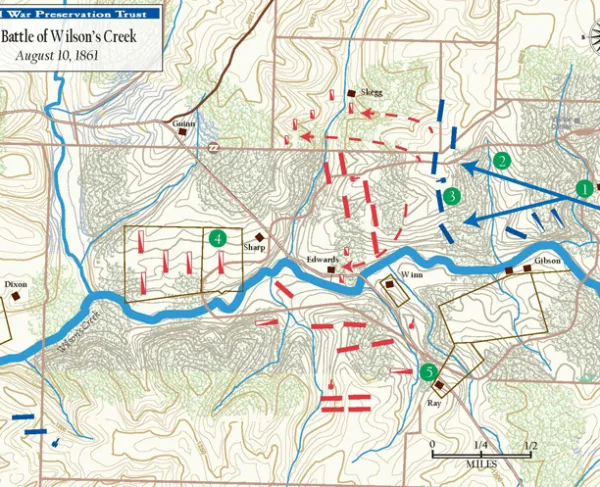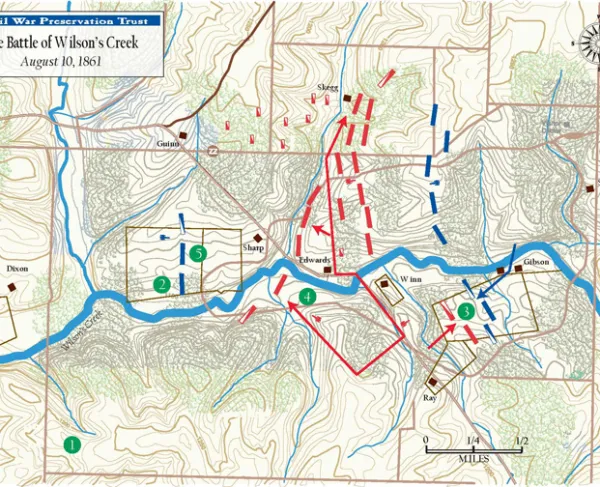
Even before the Civil War became a war to end slavery, it had a significant impact on the lives of slaves. To the slaves who lived on the battlefield of Wilson’s Creek, the events of that day would forever change the direction of their lives. Mark Sharp, for example, began his life as a slave, served as a soldier and became a veteran who caused dispute even in death.
By the summer of 1861, Sharp — who, like many slaves, took the surname of his owners — was in his early 20s and known as a hard worker and a talented basket weaver. The Sharp farm was among the most prosperous in the region, including a house and numerous outbuildings located near where Union Brig. Gen. Franz Sigel was routed from the field. Some of the battle’s most intense fighting took place around the Sharp farm — buildings were riddled with bullet holes, and at least one cannonball tore through the house itself. Although there is no record of what Mark and the other slaves did during the battle, it is very likely that they hid in the cellar with the Sharp family.
Despite significant damage to their property from the battle, the Sharps stayed in the area until the following year, when their house was burned to the ground by bushwhackers. Around this time, Mark Sharp left the family and married Elizabeth Herndon, another local slave. They lived together till February 9, 1864, when Mark went to Springfield to join the Union Army, enlisting as a private in the 68th U.S. Colored Troops.
With his unit, Sharp participated in Maj. Gen. A.J. Smith’s Expedition to Tupelo, Miss. — the first time that legendary Confederate cavalier Maj. Gen. Nathan Bedford Forrest was defeated in battle. From there, the 68th U.S.C.T. went on to participate in the siege and capture of Fort Blakeley, Ala. After serving various occupational duties throughout the South, the unit was mustered out of the service in February 1866, when Mark Sharp left Louisiana and returned to Springfield.
Later in life, Sharp suffered from rheumatism, heart disease and piles. Like many former soldiers, he applied for an invalid’s pension, but each of the three separate claims he filed was denied. When he died of consumption on November 24, 1891, his family requested that he be interred in the National Cemetery in Springfield.
In death, Sharp became the controversial figure he had never been in life. Without disputing his military service, the cemetery keeper denied the request, citing his race. The family contacted the Springfield Leader, and the newspaper soon took up their cause. In one article, a white veteran and member of the Grand Army of the Republic was quoted as saying,“... as I was glad to have a colored man help me in battle I should not be ashamed to have him by my side in death ... his services should be recognized at least in the poor courtesy of a grave.” Ultimately, however, such pleas fell on deaf ears, and Mark Sharp’s body was never admitted into the National Cemetery.
Related Battles
1,235
1,095





